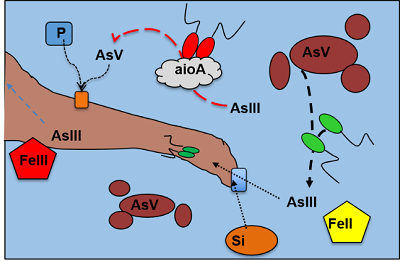
Marie Markantonis
University of Milan, Italy
Title: Silicate solubilizing rhizosphere bacteria reduce arsenic uptake into rice plants
Biography
Biography: Marie Markantonis
Abstract
Statement of the Problem: The global problem of uptake and accumulation of toxic elements (e.g. arsenic, As) in food plants (e.g. rice) urges for solutions, in order to satisfy the demand of food-safe plants for the growing world population (ML: 0.2 mg/kg rice). High bio-available silicate (Si) and phosphate (P) contents in soil lower As accumulation in the grain. Sustainable advancements in future farming practices may involve the use of silicate and phosphate solubilizing bacteria (SPSB) that could increase soil fertility and minimize As uptake. This study aimed at elucidating the role of SPSB in the mitigation of As contamination of rice in relation with Si addition as part of future farming practices in paddy rice soils. Methodology: Three mitigation strategies were tested in lab-to-field approaches (hydroponic growth pouches, soil-plant-pots): i) amendment of Si, ii) rice seed inoculation with natural rice root SPSB with As(III)-oxidation activity iii) and the combination of i) and ii). Findings: The combination of two factors resulted in a positive synergy that significantly increased germination and root development compared to no treatment or Si amendment only. In simplified hydroponic systems, presence of As(III) oxidising SPSB- inoculum reduced uptake of As, possibly due to enhancement of competition between the two ions on aquaporin transporters in the roots. In soil-plant-pots, presence of Si decreased the concentration of As in plants, emphasizing possible competition between Si and As on radical level conveyors. However, the SPSB inoculum promoted As mobilization, thus resulting in higher As uptake. Conclusion & Significance: The characterization of rice rhizosphere bacteria indicated that most of SPSB are hold in the endosphere and that their application improved plant germination and decreased As uptake. When in soil, addition of Si reduced As uptake into the rice plant and seems to be a good application for future farming practices.

Figure 1 Conceptual model arsenic transformation and uptake in to rice root, mediated by root bacteria in presence of phosphates and silicates

